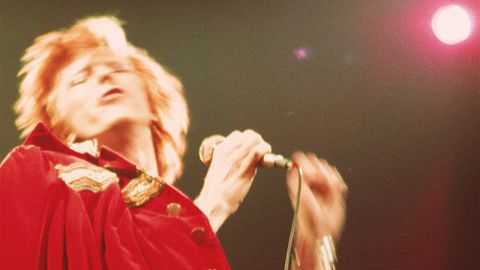Looking back, David Live was Bowie’s first stumble. Recorded at Philadephia’s Tower Theatre in haste, essentially to conjure up cash to support Tony DeFries’ mismanaged Mainman Organisation, Bowie’s initial officially released performance sounded stilted, half-cocked and lumpen. Unsurprising, when you consider Bowie’s conversion tosoul was in its infancy, he was obsessively rearranging much of his material in a blizzard of coke and directly prior to taking to the stage a musician’s strike was narrowly averted. As the band arrived they noticed extra microphones, the first indicator that they were to be recorded for, apparently, no extra fee. Cheques were hastily drawn but awkward performances, stiffened by fury, duly ensued.
If Bowie hadn’t been hobbled by Mainman’s excesses, he might well have elected not to release a post-Diamond Dogs/pre-Young Americans live record at all, but if he had, this stunning performance from LA’s’ Universal Amphitheater (recorded in September ‘74 for Alan Yentob’s Cracked Actor BBC documentary) would’ve provided ideal source material. Bowie’s fans largely concur that the show’s less-than-legal Strange Fascination incarnation represents the best live show out there, but why is it so good? It was, after all, recorded a shade under two months after David Live. Well, it turns out eight weeks is a mighty long time in the context of Bowie’s seventies.
Having been inspired by catching The Main Ingredient in April, Bowie had tried to hook their guitarist Carlos Alomar, but couldn’t pay enough. In August, Bowie started work on Young Americans and having charmed Alomar onto its sessions further persuaded him to join a newly restructured backing band for the tour’s second leg. Diamond Dogs sessioneers were replaced by, among others, Sly Stone drummer Greg Errico and newcomer Luther Vandross on backing vocals. Guitarist Earl Slick, pianist Mike Garson and saxophonist David Sanbourn locked down arrangements that enhanced the inner funk in a strong, hits-heavy set-list while retaining rock edge. Freshly favoured with a bright Tony Visconti mix, here at last is the essential Philly Dogs document.


